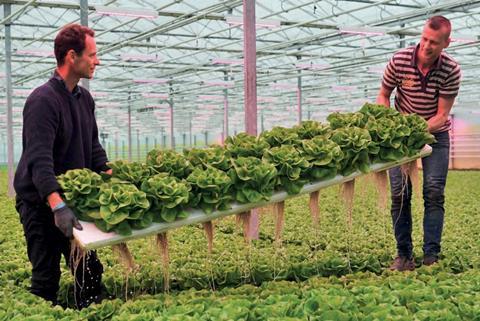
Dutch fruit and vegetable company The Greenery says it is dedicating “maximum efforts” to strengthening its position as a sustainable supply chain manager, with plans to look more closely at how it might incorporate data, consumer preferences, health trends, technology, expansion and growth in e-commerce into its business.
The comments came as part of its annual report, in which it posted a 38 per cent increase in its net profit to €12.5m for 2017.
That result appears directly linked to a recent strategy of logistical improvement, robotisation and better efficiency in its supply chain, combined with investment in new infrastructure.
The group’s turnover from continuing operations was more or less the same as in 2016 at just above €1bn, while its gross margin also remained largely unchanged at 14.9 per cent.
The recent construction of new distribution facilities – including a high-tech extension to its retail distribution centre in Barendrechtand the opening of another high-tech centre for berries in Bredahas given The Greenery more to offer its customers, the company said.
Elsewhere, initiatives taken to work more closely with growers, train employees and increase digitisation are also reported to have contributed to the improved result.
A variable interest payment on members' loans, for example, has apparently made membership “more appealing” to growers.
It also revealed it had acquired a minority share in leading UK tomato supplier APS Group and was working on a new funding model to support new investment in horticulture.
Smart move
The Greenery’s strategic approach to technology seems to be paying off, especially when it comes to impressing and attracting retail customers.
“The retail channel offers The Greenery the greatest opportunities to add value through smart logistical and supply chain solutions,” the report continued.
“The Greenery strives to structure the chain as efficiently as possible in order to make fresh fruit and vegetables accessible and affordable to all.”
Direct supply continues to emerge as a key advantage for the group, whose partner growers now supply 61 per cent of its total marketed volumes direct to customers, compared with just 40 per cent in 2013.
As a result of this and efforts to store products more efficiently, the total surface area of its distribution centre network is expected to decrease to approximately 60,000m2 by next year, more than half the 105,000m2 it operated five years ago.
“The expectation is that turnover will continue to grow, particularly among retail customers, which is in keeping with the strategy of serving end consumers whenever possible within the chain,” the group added.
“Plans for 2018 also include projects aimed at expanding the company's commercial strength and coherence, strictly within the context of the new strategy.”
Challenging start
According to the annual report, last year began with a “challenging start” due to limited availability of vegetables out of southern Europe as a result of poor weather conditions.
“While The Greenery was able to continue to serve its customers successfully, this led to a lower gross contribution,” it commented.
As a consequence, its EBITDA figure for 2017 was €16.7m, down from €18m in 2016.
Operating costs and results from participating interests remained virtually unchanged compared with the previous year’s figures, while a slight decrease in operating results – caused by the lower gross contribution and higher depreciation – was compensated by a one-off corporate income tax gain.
The Greenery’s equity capital continued to grow, to €106.2m from €95.1m in 2016.



